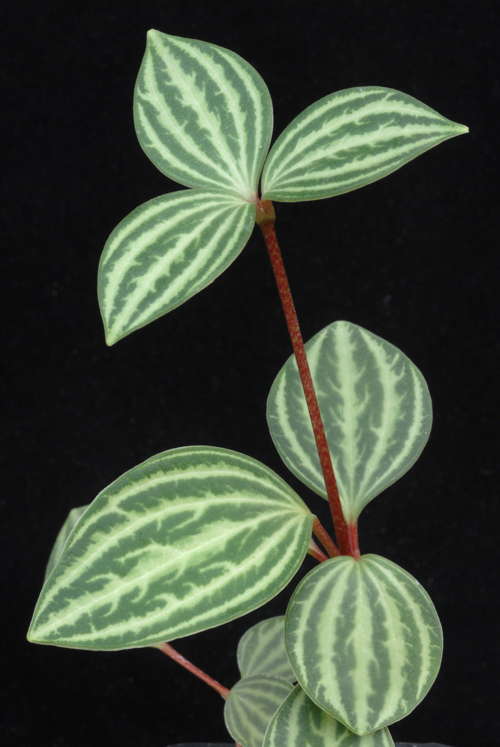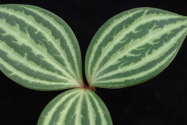Native to Peru, this species may have naturalized elsewhere in tropical America as Jim Folsom once collected it in Panama. It is also popularly cultivated among enthusiasts of tropical plants to the extent that it has the common name of “parallel peperomia” in reference to the white veins. The striped leaves evoke a watermelon pattern but the name “watermelon peperomia” applies to the more succulent but less drought-tolerant houseplant P. argyreia. Peperomia, in the same family as black pepper (Piperaceae) is one of those cross-over genera of tropicals, as many have quite succulent leaves and some can tolerate as xeric conditions as some cacti. Though not as fleshy as some, the leaves of P. puteolata are rather thick and bear a translucent layer above the chlorophyll-bearing tissue. In some species this thickened layer accounts for significant water-storing volume. In others, like P. puteolata, that function may be less significant but it is possible that this layer may help diffuse harmful wavelengths of the intense tropical sun. Given its tropical origins, we have trialed the species for cold tolerance in our Desert Conservatory where temperatures dip into the 40s°F—so far it hasn’t skipped a beat and even produces new leaves in winter. Rooted cuts of HBG 119433, a plant originally from Tropiflora Nursery. $7.

Published in the Cactus and Succulent Journal, Vol. 87 (3), May - June, 2015

